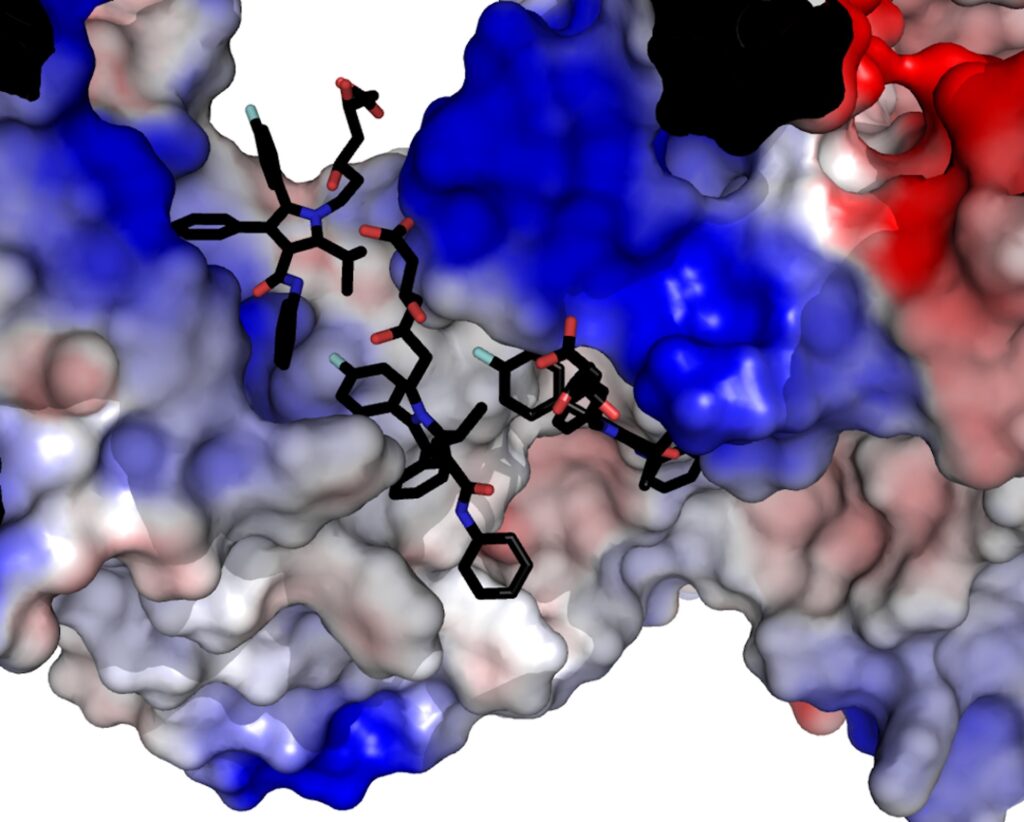Statins have transformed heart health, saving millions of lives by lowering cholesterol and reducing the risk of heart attacks and strokes. But for many patients, these drugs come with a troubling downside: muscle pain, weakness and, in rare cases, severe muscle breakdown that can lead to kidney failure.
University of British Columbia researchers and their collaborators at the University of Wisconsin-Madison have now pinpointed the cause. Their findings, published last week in Nature Communications , could pave the way for a new generation of statins without these side effects.
The team used cryo-electron microscopy, a powerful imaging technique that reveals proteins at near-atomic detail, to capture how statins interact with a critical muscle protein called the ryanodine receptor (RyR1). This protein acts like a gatekeeper for calcium inside muscle cells, opening only when muscles need to contract. When statins bind to it, they force the gate open, causing calcium to leak continuously-a toxic effect that can damage muscle tissue.

"We were able to see, almost atom by atom, how statins latch onto this channel," said lead author Dr. Steven Molinarolo, a postdoctoral researcher in UBC's department of biochemistry and molecular biology. "That leak of calcium explains why some patients experience muscle pain or, in extreme cases, life-threatening complications."
The study focused on atorvastatin, one of the most widely prescribed statins, but the findings suggest the effect may be common across the drug class. The researchers discovered that statins bind in a highly unusual way: Three molecules cluster together inside a pocket of the protein. The first molecule attaches when the channel is closed, priming it to open. Two more molecules then wedge in, forcing the channel wide open.
"This is the first time we've had a clear picture of how statins activate this channel," said Dr. Filip Van Petegem, senior author and professor at UBC's Life Sciences Institute. "It's a big step forward because it gives us a roadmap for designing statins that don't interact with muscle tissue."
By adjusting only those parts of the statin molecule that are responsible for the negative effects, scientists could preserve the part that lowers cholesterol while reducing the risk.
While severe muscle damage affects only a small fraction of over 200 million statin users worldwide, milder symptoms like aches and fatigue are far more common, and often lead patients to stop treatment. The new findings could help prevent those problems and improve adherence to life-saving therapy.
The research underscores the importance of advanced imaging technology in driving medical breakthroughs. Using the UBC faculty of medicine's high-resolution macromolecular cryo-electron microscopy facility, the team was able to visualize the statin-protein interaction in extraordinary detail-turning a fundamental question about drug safety into practical insights that could shape the next generation of therapies.
"Statins have been a cornerstone of cardiovascular care for decades," Dr. Van Petegem said. "Our goal is to make them even safer, so patients can benefit without fear of serious side effects."
For millions of people who rely on statins, that could mean fewer muscle problems-and a better quality of life.






